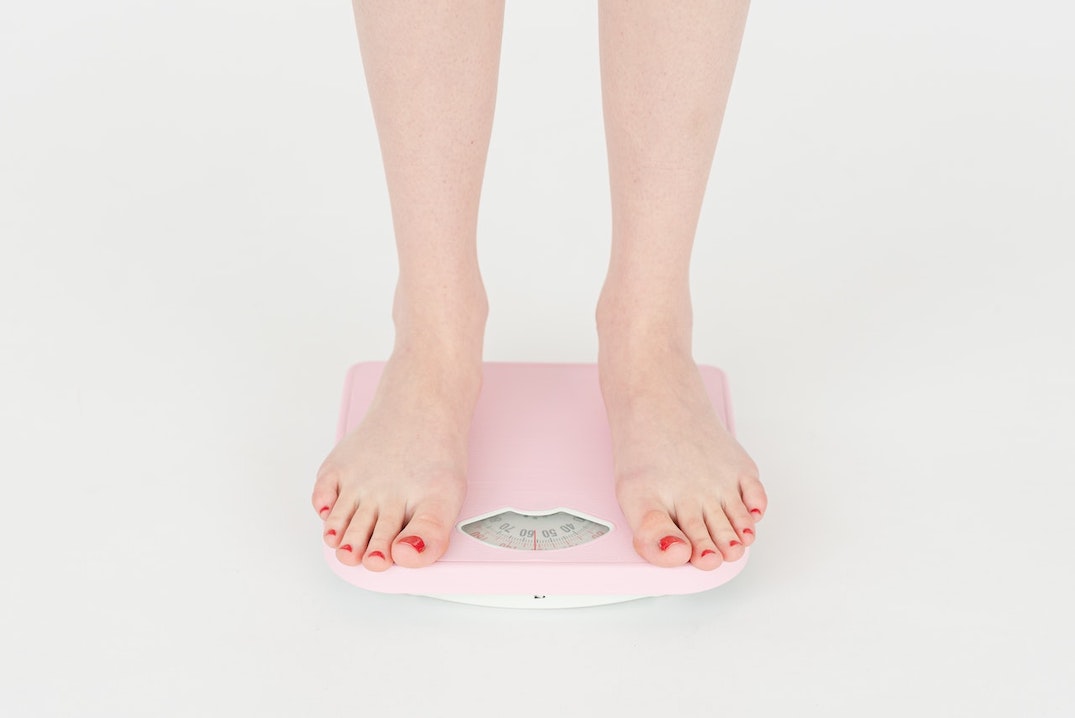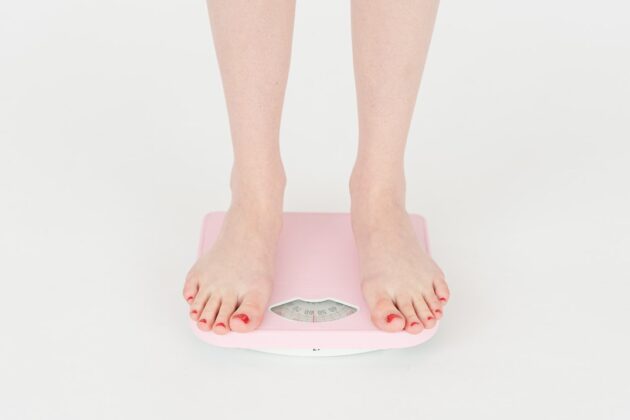Ozempic & Nausea: Why It Happens & How to Find Relief
Ozempic (generic name semaglutide) is a once-weekly injectable diabetes medication that is helping many people control their diabetes and lose weight.
It works by helping your body make more insulin to help reduce your blood sugar. It also slows down how quickly food leaves your stomach. This slowed digestion sometimes leads to gastrointestinal side effects.
One common side effect of taking Ozempic is nausea.
In clinical trials, 20.3% of patients on the 1mg Ozempic dose and 15.8% of patients on the 0.5 mg Ozempic dose reported experiencing nausea. Nausea typically occurs more frequently with higher doses and while the dose is being increased.
Nausea from Ozempic usually only lasts a few weeks and gradually decreases as your body adjusts to the medication. However, nausea can come back each time your dose is increased even if you started to feel better on a lower dose.
This guide goes over why nausea may happen on Ozempic, how long it lasts, and how to help.

Reach your weight loss goals faster with support from a Registered Dietitian
90% of Zaya Care patients pay $0 for one-on-one counseling with an RD
Why nausea is a common side effect of Ozempic
Nausea is thought to be caused by Ozempic partly due to its effect on the gut.
Ozempic works by mimicking the naturally occurring GLP-1 hormone. This hormone slows down how quickly food travels through your stomach. It also sends signals to your brain that make you feel fuller sooner than you might have normally.
Food sitting in your stomach for longer may trigger unpleasant side effects like nausea, vomiting, and other digestive issues.
Since food causes your stomach to expand, this can cause extra pressure to build up in your gut. This pressure can stretch the nerves around your gut, telling them to send signals to your brain that you’re overly full, which may lead to feelings of nausea.
During clinical studies, nausea was the most commonly reported side effect of Ozempic. About one in five people reported nausea while taking the 1mg dose. Nausea occurs most frequently while the dose of Ozempic is being increased and with higher doses overall.
Fortunately, nausea from Ozempic is usually mild and tends to go away on its own as your body adjusts.
When nausea from Ozempic typically starts & how long it lasts
For most people, nausea from Ozempic doesn’t start until they have been taking it for 8 to 12 weeks. Since Ozempic is a long-acting, weekly injectable medication, side effects may take longer to show up.
If you do experience nausea while taking Ozempic, it usually only lasts a few weeks. However, this varies from person to person. You will likely feel less nausea as your body adjusts to the medication.
The nausea experienced on Ozempic is typically mild and often goes away on its own.
However, if your dose of Ozempic is increased, your nausea may come back. This is true even if you started feeling better on a lower dose.
How to find relief from nausea caused by Ozempic
If you’re experiencing nausea from taking Ozempic, you may be wondering how to find relief. Luckily, there are things you can do to make yourself feel better as you wait for this side effect to subside.
1) Talk to your doctor about your nausea & dosage
Studies show that higher doses of Ozempic are more likely to cause nausea.
Some people need higher doses to better control their blood sugar levels. However, if your blood sugar is well controlled on a lower dose, talk to your doctor about whether you can stay on the lower dose. This will also prevent nausea associated with a dose increase.
Additionally, it’s important to communicate any side effects you’re experiencing on Ozempic with your healthcare provider. This is especially true if you believe the amount of nausea you’re experiencing is not normal.
2) Increase your dosage slowly if you need to
Ozempic is a medication that is started at a low dose and gradually increases over time. The starting dose is 0.25mg once a week and the maximum dose is 2mg once a week. Ozempic pre-filled pens are available in 0.25mg, 0.5mg, 1mg, and 2mg doses.
Nausea most often occurs when your dose of Ozempic is increased.
If you notice that you’re experiencing unbearable nausea with your new higher dose, ask your doctor if you can increase your dose in smaller increments until your body adjusts.
3) Eat smaller, more frequent meals
Since Ozempic makes food move through your digestive system more slowly, you may not need to eat as much at one time in order to feel full. Feeling too full can trigger nausea, so it’s best to eat smaller, more frequent meals.
A good way to do this is to make your plate as you normally would. Then, take half of it off and place it in a storage container. Eat your meal slowly, then pause for 20 minutes after finishing to see if you feel full. If not, you can eat the remaining portion.

Reach your weight loss goals faster with support from a Registered Dietitian
90% of Zaya Care patients pay $0 for one-on-one counseling with an RD
4) Avoid foods that can trigger nausea
Some foods can trigger nausea especially while taking Ozempic. Knowing which foods are best to eat and which to avoid can lessen your nausea or prevent it from happening in the first place.
Foods to avoid while taking Ozempic include:
- Greasy, fatty, and fried foods. Foods like chicken tenders, bacon, hamburgers, French fries, and cheese that are high in fat.
- Sugary foods and drinks. Soda, candy, cupcakes, cookies, and ice cream that are high in sugar.
- Ultra-processed foods. Ultra-processed foods include hot dogs, chicken nuggets, canned soups, and sweetened breakfast cereals.
- Refined carbs. Carbs like bagels, donuts, white bread, white rice, and pasta are considered refined carbs.
- Alcohol. Alcoholic beverages including beer, wine, and mixed drinks can trigger nausea and are best avoided while taking Ozempic. You can learn more about drinking alcohol on Ozempic here.
5) Stay hydrated with small sips of water
If you’re feeling nauseous, you may not want to put anything in your stomach. However, it’s important to stay hydrated because dehydration can make your nausea worse.
Taking small sips of ice-cold water or another clear liquid keeps you hydrated and may even help relieve your nausea.
6) Try home remedies for nausea
Many home remedies for nausea can help provide quick relief when you’re not feeling well. Some, like Pepto-Bismol and Dramamine, are medications that can be purchased over the counter.
Other options include herbal remedies such as ginger or peppermint. Ginger can be eaten raw or made into tea or chews. Peppermint oil, on the other hand, has been shown to be an effective anti-nausea remedy when applied under the nose.
Here are some home remedies you can try for quick nausea relief:
- Pepto-Bismol
- Dramamine
- Bonine
- Ginger tea
- Peppermint aromatherapy
- Acupressure wristband
- Breathing exercises
7) Talk to your doctor about prescription medications for nausea
There are also prescription medications that can help relieve nausea. If nausea is preventing you from performing your typical daily activities, talk to your doctor about getting a prescription for an anti-nausea medication.
Here is a list of medications that are commonly prescribed for nausea including any potential interactions they may have with Ozempic:
- Zofran. A commonly prescribed anti-nausea medication, Zofran does not have any known interactions with Ozempic.
- Reglan. Reglan is used to treat nausea and vomiting. It’s often used to treat people with diabetes who are suffering from nausea due to slowed digestion. There are no known drug interactions between Reglan and Ozempic.
- Transderm Scop. Transderm Scop is a patch containing the active ingredient scopolamine. Scopolamine is used to prevent nausea caused by motion sickness. It has no known interactions with Ozempic.
- Compazine. Compazine is an anti-nausea medication that may increase blood sugar. This side effect may reduce the effectiveness of Ozempic.
- Promethegan. Promethegan is an allergy medication that is also sometimes used to treat nausea. Like Compazine, Promethegan can also raise blood sugar, which can reduce Ozempic’s effectiveness.
8) Eat bland foods like toast or crackers
When you’re nauseous, nothing sounds appetizing. However, not eating enough food can lead to low blood sugar. A common symptom of low blood sugar is nausea.
To avoid low blood sugar, try eating bland foods like toast, crackers, or plain pasta. These foods don’t have a strong flavor or smell and are unlikely to make you feel more nauseous.
9) Try ginger tea or ginger candies
Ginger has been shown to be a natural way to relieve nausea. Some studies show that ginger may reduce nausea by speeding up digestion.
If you want to try ginger, it can be used in a variety of different forms including raw, tea, candies, crystallized, essential oils, and supplements.
You can make ginger tea at home by pouring hot water over sliced or grated ginger. Sip the tea slowly to avoid becoming nauseous from drinking too much liquid too quickly. Ginger candies can be purchased at the grocery store or online.
10) Avoid strong smells
Nothing is worse than when you’re feeling nauseous and suddenly smell something that makes you feel even more sick.
Strong smells can both trigger nausea and make it worse. If possible, avoid using products that are highly fragrant such as perfume, shampoo, cleaning products, and candles. Certain food smells may also make your nausea worse and are best avoided.
11) Get plenty of fresh air
While it’s not exactly clear why, fresh air can help ease nausea symptoms.
It’s possible that breathing in fresh air allows you to focus on something other than nausea. Opening a window for fresh air can also help reduce the presence of any strong smells. Finally, cold air may help lower your body temperature, which can make you feel less nauseous.
12) Rest in a sitting position after eating
If you want to prevent nausea after eating, don’t lie down.
When you lie down, your stomach contents are more likely to rise back up into your esophagus. This can lead to reflux and indigestion, which contributes to nausea.
By resting in a sitting position, you reduce the chance of developing reflux, indigestion, and nausea after eating. Normally, it takes about two hours for food to pass through your stomach. However, on Ozempic, digestion is slower so you may want to wait a little longer to lie down.
>> Thinking of stopping Ozempic? Learn what happens when you stop weight loss drugs & how to not regain weight
Working with a Registered Dietitian to help with nausea from Ozempic
Ozempic has helped many people lower their blood sugar and lose weight. However, taking it may also cause some uncomfortable gastrointestinal side effects like nausea.
There are many benefits to working with a dietitian, especially for those taking medications for diabetes or weight loss. Registered dietitians are nutrition professionals who can teach you how to eat to reduce or eliminate nausea and other gastrointestinal side effects while taking Ozempic.
Other common side effects of Ozempic include vomiting, diarrhea, constipation, and abdominal pain. It’s a good idea to consider working with a dietitian while taking Ozempic to help manage these side effects.
A registered dietitian will talk to you about your food preferences, answer your questions, and help you create a custom meal plan that works for you. They’ll teach you which foods to eat and which foods to avoid to manage your nausea. They’ll also ensure that you’re still meeting your unique nutritional needs while taking Ozempic.
Here at Zaya Care, we’re dedicated to helping people find dietitians based on their preferences, needs, and insurance.
When you request an appointment with one of our Registered Dietitians, we’ll check your insurance so you know exactly how much you’ll have to pay, if anything at all.
It’s worth noting that 90% of Zaya Care patients pay $0 for nutrition care with a registered dietitian as we are in-network with many major carriers.

Reach your weight loss goals faster with support from a Registered Dietitian
90% of Zaya Care patients pay $0 for one-on-one counseling with an RD
Ozempic (generic name semaglutide) is a once-weekly injectable diabetes medication that is helping many people control their diabetes and lose weight.
It works by helping your body make more insulin to help reduce your blood sugar. It also slows down how quickly food leaves your stomach. This slowed digestion sometimes leads to gastrointestinal side effects.
One common side effect of taking Ozempic is nausea.
In clinical trials, 20.3% of patients on the 1mg Ozempic dose and 15.8% of patients on the 0.5 mg Ozempic dose reported experiencing nausea. Nausea typically occurs more frequently with higher doses and while the dose is being increased.
Nausea from Ozempic usually only lasts a few weeks and gradually decreases as your body adjusts to the medication. However, nausea can come back each time your dose is increased even if you started to feel better on a lower dose.
This guide goes over why nausea may happen on Ozempic, how long it lasts, and how to help.

Reach your weight loss goals faster with support from a Registered Dietitian
90% of Zaya Care patients pay $0 for one-on-one counseling with an RD
Why nausea is a common side effect of Ozempic
Nausea is thought to be caused by Ozempic partly due to its effect on the gut.
Ozempic works by mimicking the naturally occurring GLP-1 hormone. This hormone slows down how quickly food travels through your stomach. It also sends signals to your brain that make you feel fuller sooner than you might have normally.
Food sitting in your stomach for longer may trigger unpleasant side effects like nausea, vomiting, and other digestive issues.
Since food causes your stomach to expand, this can cause extra pressure to build up in your gut. This pressure can stretch the nerves around your gut, telling them to send signals to your brain that you’re overly full, which may lead to feelings of nausea.
During clinical studies, nausea was the most commonly reported side effect of Ozempic. About one in five people reported nausea while taking the 1mg dose. Nausea occurs most frequently while the dose of Ozempic is being increased and with higher doses overall.
Fortunately, nausea from Ozempic is usually mild and tends to go away on its own as your body adjusts.
When nausea from Ozempic typically starts & how long it lasts
For most people, nausea from Ozempic doesn’t start until they have been taking it for 8 to 12 weeks. Since Ozempic is a long-acting, weekly injectable medication, side effects may take longer to show up.
If you do experience nausea while taking Ozempic, it usually only lasts a few weeks. However, this varies from person to person. You will likely feel less nausea as your body adjusts to the medication.
The nausea experienced on Ozempic is typically mild and often goes away on its own.
However, if your dose of Ozempic is increased, your nausea may come back. This is true even if you started feeling better on a lower dose.
How to find relief from nausea caused by Ozempic
If you’re experiencing nausea from taking Ozempic, you may be wondering how to find relief. Luckily, there are things you can do to make yourself feel better as you wait for this side effect to subside.
1) Talk to your doctor about your nausea & dosage
Studies show that higher doses of Ozempic are more likely to cause nausea.
Some people need higher doses to better control their blood sugar levels. However, if your blood sugar is well controlled on a lower dose, talk to your doctor about whether you can stay on the lower dose. This will also prevent nausea associated with a dose increase.
Additionally, it’s important to communicate any side effects you’re experiencing on Ozempic with your healthcare provider. This is especially true if you believe the amount of nausea you’re experiencing is not normal.
2) Increase your dosage slowly if you need to
Ozempic is a medication that is started at a low dose and gradually increases over time. The starting dose is 0.25mg once a week and the maximum dose is 2mg once a week. Ozempic pre-filled pens are available in 0.25mg, 0.5mg, 1mg, and 2mg doses.
Nausea most often occurs when your dose of Ozempic is increased.
If you notice that you’re experiencing unbearable nausea with your new higher dose, ask your doctor if you can increase your dose in smaller increments until your body adjusts.
3) Eat smaller, more frequent meals
Since Ozempic makes food move through your digestive system more slowly, you may not need to eat as much at one time in order to feel full. Feeling too full can trigger nausea, so it’s best to eat smaller, more frequent meals.
A good way to do this is to make your plate as you normally would. Then, take half of it off and place it in a storage container. Eat your meal slowly, then pause for 20 minutes after finishing to see if you feel full. If not, you can eat the remaining portion.

Reach your weight loss goals faster with support from a Registered Dietitian
90% of Zaya Care patients pay $0 for one-on-one counseling with an RD
4) Avoid foods that can trigger nausea
Some foods can trigger nausea especially while taking Ozempic. Knowing which foods are best to eat and which to avoid can lessen your nausea or prevent it from happening in the first place.
Foods to avoid while taking Ozempic include:
- Greasy, fatty, and fried foods. Foods like chicken tenders, bacon, hamburgers, French fries, and cheese that are high in fat.
- Sugary foods and drinks. Soda, candy, cupcakes, cookies, and ice cream that are high in sugar.
- Ultra-processed foods. Ultra-processed foods include hot dogs, chicken nuggets, canned soups, and sweetened breakfast cereals.
- Refined carbs. Carbs like bagels, donuts, white bread, white rice, and pasta are considered refined carbs.
- Alcohol. Alcoholic beverages including beer, wine, and mixed drinks can trigger nausea and are best avoided while taking Ozempic. You can learn more about drinking alcohol on Ozempic here.
5) Stay hydrated with small sips of water
If you’re feeling nauseous, you may not want to put anything in your stomach. However, it’s important to stay hydrated because dehydration can make your nausea worse.
Taking small sips of ice-cold water or another clear liquid keeps you hydrated and may even help relieve your nausea.
6) Try home remedies for nausea
Many home remedies for nausea can help provide quick relief when you’re not feeling well. Some, like Pepto-Bismol and Dramamine, are medications that can be purchased over the counter.
Other options include herbal remedies such as ginger or peppermint. Ginger can be eaten raw or made into tea or chews. Peppermint oil, on the other hand, has been shown to be an effective anti-nausea remedy when applied under the nose.
Here are some home remedies you can try for quick nausea relief:
- Pepto-Bismol
- Dramamine
- Bonine
- Ginger tea
- Peppermint aromatherapy
- Acupressure wristband
- Breathing exercises
7) Talk to your doctor about prescription medications for nausea
There are also prescription medications that can help relieve nausea. If nausea is preventing you from performing your typical daily activities, talk to your doctor about getting a prescription for an anti-nausea medication.
Here is a list of medications that are commonly prescribed for nausea including any potential interactions they may have with Ozempic:
- Zofran. A commonly prescribed anti-nausea medication, Zofran does not have any known interactions with Ozempic.
- Reglan. Reglan is used to treat nausea and vomiting. It’s often used to treat people with diabetes who are suffering from nausea due to slowed digestion. There are no known drug interactions between Reglan and Ozempic.
- Transderm Scop. Transderm Scop is a patch containing the active ingredient scopolamine. Scopolamine is used to prevent nausea caused by motion sickness. It has no known interactions with Ozempic.
- Compazine. Compazine is an anti-nausea medication that may increase blood sugar. This side effect may reduce the effectiveness of Ozempic.
- Promethegan. Promethegan is an allergy medication that is also sometimes used to treat nausea. Like Compazine, Promethegan can also raise blood sugar, which can reduce Ozempic’s effectiveness.
8) Eat bland foods like toast or crackers
When you’re nauseous, nothing sounds appetizing. However, not eating enough food can lead to low blood sugar. A common symptom of low blood sugar is nausea.
To avoid low blood sugar, try eating bland foods like toast, crackers, or plain pasta. These foods don’t have a strong flavor or smell and are unlikely to make you feel more nauseous.
9) Try ginger tea or ginger candies
Ginger has been shown to be a natural way to relieve nausea. Some studies show that ginger may reduce nausea by speeding up digestion.
If you want to try ginger, it can be used in a variety of different forms including raw, tea, candies, crystallized, essential oils, and supplements.
You can make ginger tea at home by pouring hot water over sliced or grated ginger. Sip the tea slowly to avoid becoming nauseous from drinking too much liquid too quickly. Ginger candies can be purchased at the grocery store or online.
10) Avoid strong smells
Nothing is worse than when you’re feeling nauseous and suddenly smell something that makes you feel even more sick.
Strong smells can both trigger nausea and make it worse. If possible, avoid using products that are highly fragrant such as perfume, shampoo, cleaning products, and candles. Certain food smells may also make your nausea worse and are best avoided.
11) Get plenty of fresh air
While it’s not exactly clear why, fresh air can help ease nausea symptoms.
It’s possible that breathing in fresh air allows you to focus on something other than nausea. Opening a window for fresh air can also help reduce the presence of any strong smells. Finally, cold air may help lower your body temperature, which can make you feel less nauseous.
12) Rest in a sitting position after eating
If you want to prevent nausea after eating, don’t lie down.
When you lie down, your stomach contents are more likely to rise back up into your esophagus. This can lead to reflux and indigestion, which contributes to nausea.
By resting in a sitting position, you reduce the chance of developing reflux, indigestion, and nausea after eating. Normally, it takes about two hours for food to pass through your stomach. However, on Ozempic, digestion is slower so you may want to wait a little longer to lie down.
>> Thinking of stopping Ozempic? Learn what happens when you stop weight loss drugs & how to not regain weight
Working with a Registered Dietitian to help with nausea from Ozempic
Ozempic has helped many people lower their blood sugar and lose weight. However, taking it may also cause some uncomfortable gastrointestinal side effects like nausea.
There are many benefits to working with a dietitian, especially for those taking medications for diabetes or weight loss. Registered dietitians are nutrition professionals who can teach you how to eat to reduce or eliminate nausea and other gastrointestinal side effects while taking Ozempic.
Other common side effects of Ozempic include vomiting, diarrhea, constipation, and abdominal pain. It’s a good idea to consider working with a dietitian while taking Ozempic to help manage these side effects.
A registered dietitian will talk to you about your food preferences, answer your questions, and help you create a custom meal plan that works for you. They’ll teach you which foods to eat and which foods to avoid to manage your nausea. They’ll also ensure that you’re still meeting your unique nutritional needs while taking Ozempic.
Here at Zaya Care, we’re dedicated to helping people find dietitians based on their preferences, needs, and insurance.
When you request an appointment with one of our Registered Dietitians, we’ll check your insurance so you know exactly how much you’ll have to pay, if anything at all.
It’s worth noting that 90% of Zaya Care patients pay $0 for nutrition care with a registered dietitian as we are in-network with many major carriers.

Reach your weight loss goals faster with support from a Registered Dietitian
90% of Zaya Care patients pay $0 for one-on-one counseling with an RD
















